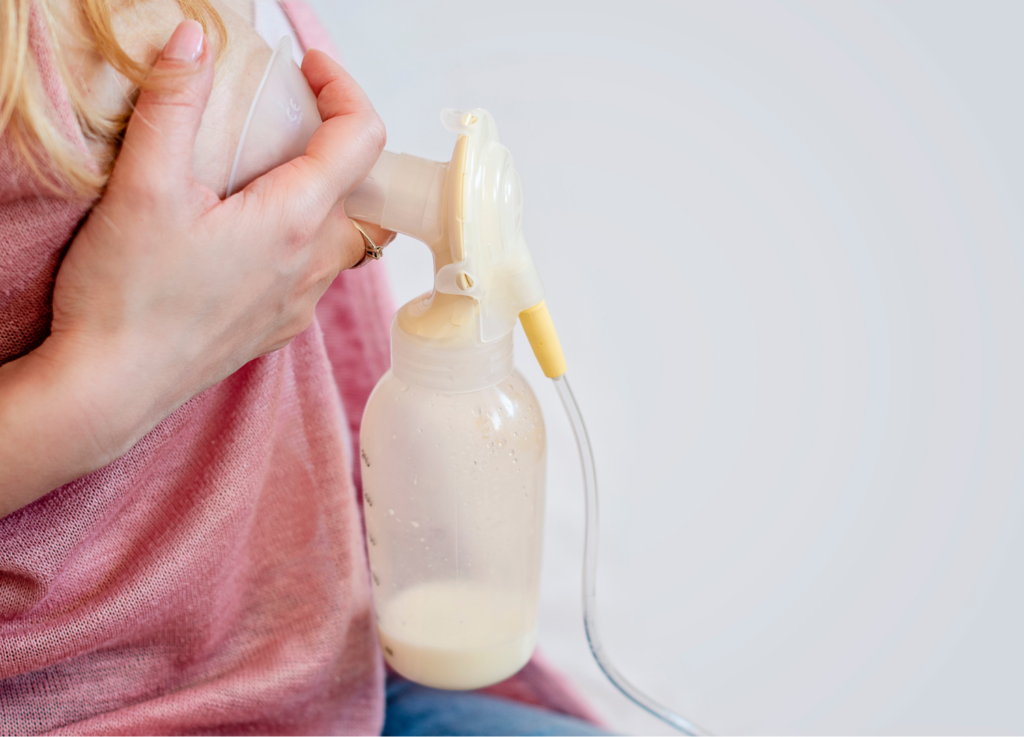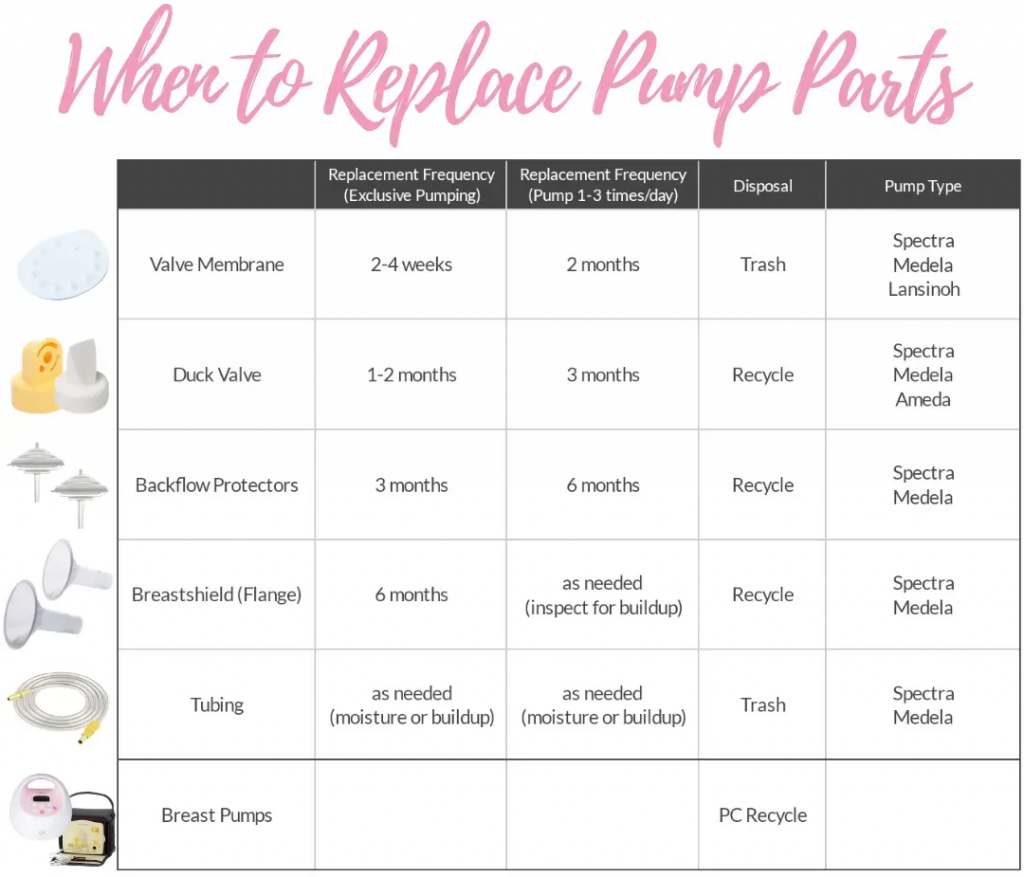5 Basics Of Successful Breast Milk Removal When Pumping
December 13, 2021 2024-06-20 15:375 Basics Of Successful Breast Milk Removal When Pumping
5 Basics of Effective Breast Milk Removal When Pumping

“I love pumping!” said no mom ever.
Every mother wants to get the most out of her pumping efforts. This can be tricky, especially when you can’t be with your baby to allow for the natural process of responding to their needs directly and on demand.
Whether you’re going back to work, traveling, trying to increase your supply, or just needing to store some extra milk for a rainy day, the tips below can help you maximize your output and feel positively about it.
Read on for our 5 basic tips for effective milk removal!
1. USE YOUR HANDS: MASSAGE & COMPRESS
Have you ever massaged a lemon to soften it up and make it more juicy before you cut it open? This trick works for your breasts as well!
Before and during pumping, massage your breasts using gentle, yet firm, circular motions, moving from the chest wall toward the nipple. If possible, apply a warm, moist compress before beginning to further encourage your milk to release. This hands-on pumping technique will help maximize the amount of milk you will pump in each session, and also, because you’ll be emptying your breasts more fully, it will help increase your milk supply.
Breast compression is a method where you put a little extra pressure on your milk glands by gently squeezing your breast. Compressions stimulate your letdown and increase the milk flow, and can be very helpful to both elicit your milk letdown and to keep the milk flowing during your pumping session.
Please reach out if you need help with these techniques. We accept most major insurance!
2. USE YOUR SENSES: SMELL, SIGHT, HEARING
Psychological methods can be very effective in helping your milk let down. When a baby starts to nurse, mom’s oxytocin level rises, causing milk to let down. When you can’t be with your baby, using your senses helps your brain send the same signals and release that oxytocin (aka the “love hormone”) to get your milk flowing.
Here are a few ways to engage your senses while pumping:
👕 Bring your baby’s outfit from the previous day and smell it while breathing deeply and thinking of her/him.
📷 Look at pictures or watch videos of your baby.
👂 Listen to a recording of your baby crying or cooing.
❎ Don’t watch the pump! Like watching water boil or paint dry, it can feel like forever when you’re staring at it.
🤳 If distraction works better for you, watch something else and pay no attention to what you’re doing until your time is up.
If you are still having problems, consider making an appointment for a one-on-one consultation. Circumstances vary, and our breastfeeding specialists can provide personalized help for your individual situation.
3. Relax & Reduce Stress
Moms are multitaskers, either by nature or necessity! While multitasking is a valuable skill, it can derail your pumping efforts. In order to maximize your milk production and pumping output, you need to be relaxed and in the moment, and as free of stress as possible. Cortisol (the stress hormone) interferes with oxytocin release, which is responsible for your milk ejection reflex. See the potential problem here?
>> Some common reasons stress causes a reduction in output and overall milk supply: <<
🤹♀ juggling multiple tasks
🪑 sitting uncomfortably
🔊 pumping in a loud or distracting environment
>> What can you do to reduce these stressors and let that oxytocin flow? <<
🌬 take some slow, deep breaths
🙇♀ separate your thoughts from work
🧘♀ do a few minutes of guided meditation before you start
💦 think positive thoughts and visualize your milk releasing
It is not realistic for most moms to eliminate all the stressors from your pumping situation. Just do your best, and try to make those 10-20 minutes your own. At least, take a couple minutes at the beginning to calm yourself and get the process started. If you aren’t provided a private, comfortable place to pump at work, please read about the Break Time For Nursing Mothers Act to see if your employer is in violation of this law.
4. MAINTAIN NUTRITION & HYDRATION
It is widely known that hydration and nutrition play a key role in breastfeeding success. Let’s clear up a few myths and offer a few reminders to help you along the journey.
Hydration and milk production:
🍶 You don’t need special drinks containing certain ingredients (especially since most of them are high in sugar or artificial sweetener).
🥛 There is no magic number of ounces or mls that you need each day. Just drink to thirst and keep a glass of water handy at your nursing/pumping station.
☕ You don’t need to completely avoid caffeine, but remember that it does have a diuretic effect, so you’ll want to drink extra water after your cup.
⚛ Electrolytes can help with hydration, but not all are created equal!
Read our article: Hydration & Electrolytes
Nutrition and milk production:
🥙 There are no specific foods to avoid except the ones you don’t like, or if your baby demonstrates a sensitivity to something.
✨ There are no magic foods that will substantially increase your supply, only ones that help support healthy milk production.
🍽 Your body needs 300-500 extra calories per day to sustain milk production.
👉 The type of calories you consume matters! Choose wisely.
Watch our video: Meal Prep Options & Services for Busy Moms!
5. FLANGE FIT & REPLACE PUMP PARTS
Do you have the correct size flanges? They are not one size fits all! The “standard” 24mm flanges that typically come with your breast pump are not ideal for every mother. Using the incorrect size can lead can lead to pain, damage, and supply reduction. You can schedule a 30 minute Pump Consult & Flange Fitting, and we will find your correct size and go over your pump settings to ensure you are using it correctly and efficiently. Insurance accepted!
Do you know when to replace your pump parts? Using worn out parts is a leading cause of reduced supply.
Duck Valves/valve membranes: these are the most frequently replaced component of your pump. They are made of silicone, which stretches and loses elasticity, impacting suction power.
Backflow Protectors: not all pumps have these, but if yours does, replace them based on your pumping frequency.
Flanges/Flange Connectors: these only need replacing if residue builds up that is difficult to remove.
Tubing: If your tubing gets any moisture trapped inside, replace it immediately to prevent mold. If it becomes stretched and worn out (if it slides on and off easily), your pump’s suction strength will be impacted.
The Pump: most pump motors are designed to last through one baby’s needs, and do wear out over time. It is recommended to get a new pump with each baby.
Use our guide or check with your pump manufacturer for their recommended replacement timeline to ensure your pump parts are working as they should!

***The information provided on our website is intended solely for general educational and informational purposes only. It is neither intended nor implied to be a substitute for professional medical advice. Always seek the advice of your physician for any questions you may have regarding your or your child’s medical condition. Never disregard professional medical advice or delay in seeking it because of something you have received in this information.***
Search





